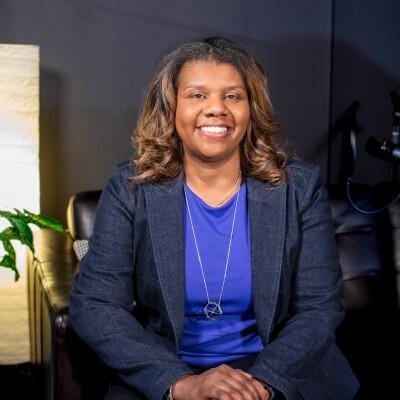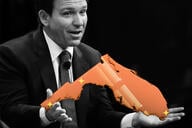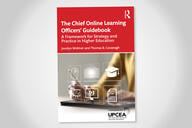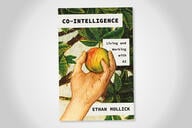You have /5 articles left.
Sign up for a free account or log in.
Cristi Ford and I first met when she was the assistant vice provost for learning innovation initiatives at the University of Maryland Global Campus. In 2022, Cristi joined D2L, first as a vice president of academic affairs and then as the company’s chief learning officer.
In a world where ed-tech company leadership is too infrequently drawn from university leaders, Cristi’s role at D2L is an exception. When she joined D2L, Cristi came with a strong network of trusted colleagues and friends (including me) across the postsecondary ecosystem. I asked Cristi if she would answer my questions about her role at D2L, her career and the state of university/company collaborations, and she graciously agreed.

Q: Tell us about your role at D2L. What are your primary responsibilities and goals as the company’s chief learning officer?
A: As D2L’s chief learning officer, I bring an academic lens to a technology company grounded in its identity as a learning organization. My work is centered on ensuring that our teaching and learning strategies reflect both the needs of today’s institutions and the future of education. With a background that spans academic leadership roles in higher education, including serving as chief academic officer and associate vice provost, I’ve long been committed to equity, quality and access—principles I now apply on a global scale at D2L.
In this role, I lead a team of learning experts and thought leaders who support institutional transformation by aligning pedagogy, strategy and technology. Our focus spans the K–12, higher education and workforce sectors, with a particular emphasis on future-ready learning models, credentialing and the responsible integration of AI. I also work closely with our global sales leaders to strengthen partnerships, support adoption and help institutions articulate the value of learning innovation to a broad set of stakeholders.
Since joining D2L, I’ve launched initiatives like the Teach and Learn podcast and the Educators in Residence program—efforts that both elevate practitioner voices and contribute to the scholarship of teaching and learning. Through strategic partnerships with AAC&U and Quality Matters, I’ve also helped position D2L as a credible partner in advancing quality online education and building capacity for digital transformation. Ultimately, my role is about keeping learning—and the learners themselves—at the center of everything we do.
Q: Reflecting on your career path, what advice might you give anyone considering pursuing a career in ed-tech leadership? How did your Ph.D. in educational leadership and policy analysis prepare you for your current leadership role?
A: If there’s one piece of advice I would offer to anyone considering a career in ed-tech leadership, it’s this: Embrace the nonlinear journey. My own path—from special education and autism advocacy to digital learning and now to ed-tech executive leadership—has been anything but traditional. And that’s the beauty of it. Every experience, even those that seemed disconnected at the time, has uniquely positioned me to lead in a space where innovation, inclusion and transformation intersect.
I often tell emerging leaders: adaptability is your compass and continuous learning is your map. Whether you’re navigating policy shifts, emerging technologies, or institutional priorities, staying rooted in your purpose while remaining open to evolution is key. Find your people, invest in your own growth and don’t be afraid to create your own lane. Leadership in ed-tech requires a blend of vision, resilience and a deep belief in the power of learning to change lives.
My Ph.D. gave me the tools to ask the hard questions and to see systems from both a micro and macro level. It equipped me with the research foundation to drive data-informed decision-making, the policy awareness to advocate for change and the leadership grounding to bring others along. More than anything, it taught me that real impact comes not from fitting into a model, but from helping to shape new ones.
In ed tech, we’re not just designing systems—we’re shaping futures. That work takes courage, creativity and a deep commitment to equity. And it starts with saying yes to the unexpected.
Q: Authentic partnership across the nonprofit university/for-profit ed-tech company divide is challenging. We often speak a different language and have incompatible timelines, incentives and values. And yet, your role at D2L is at least partially about bridging that chasm. How do you approach the challenge of trust-building and partnership formation with universities?
A: This is such an important question—and one I reflected deeply on before stepping into this role. My career has been rooted in academic spaces, where I’ve had a seat at the table in shaping strategy, guiding institutional transformation and selecting the technologies we hoped would make a difference for our learners. I’ve lived through the complexity—the push and pull between academic priorities and vendor solutions, the skepticism, and at times, the outright disconnect.
So, as I transitioned into the role of chief learning officer at D2L, I brought with me not just an understanding of the academic context, but a deep empathy for it. I’ve seen firsthand how trust is built—or broken—between institutions and ed-tech partners. And I believe the only way to truly bridge that divide is by staying relentlessly focused on shared purpose: the learners.
For me, partnership isn’t transactional—it’s transformational. It means listening carefully to what institutions are trying to solve, honoring the unique DNA of each organization and showing up with solutions that are responsive, not prescriptive. My goal is to ensure that every engagement we have—whether it’s a product conversation, a strategy session or a leadership dialogue—reflects the realities educators are navigating and positions us as a thought partner that adds value.
At the heart of it, I lead with a commitment to equity, to curiosity and to building learning ecosystems that are both sustainable and inclusive. And if we’re going to move the sector forward, we have to do it together—with trust, transparency and a willingness to reimagine what’s possible.
These are the types of partnerships that will build the future of education. We are living in times of both crisis and great opportunity—and the work we do together now will shape what’s next for generations of learners.




